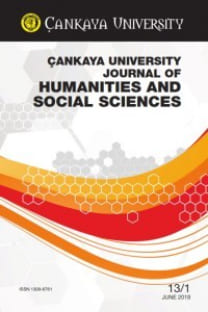Yasak Olanın Bedeli ve Hayatın Değeri
İncil hikayeleri, insanlığa ve genel olarak insanın sahip olması gereken niteliklerine hitap eden mistik boyutları nedeniyle Avrupa’da oluşturulan edebiyat ve sanat eserleri için temel bir tema görevi görür. Hem Âdem ile Havva’nın hikayesi hem de bilginin meyvesi (yasak elma), tarih boyunca yazarlar ve şairler için ilham kaynağı olarak hizmet eden yaygın bir edebi konu haline gelmiştir. Yasak olanın cezbediciliği, edebi eserlerdeki kahramanlar için hem bir uyarı hem de bir sosyal yaşamı düzenleme kuralı olarak edebiyatçılar tarafından eserlerinde kullanılmıştır. Hem Christina Rossetti hem de Thomas Mann yasak meyve temasını ve sonuçlarını eserlerinde konu olarak kullanırlar. Bunu, kişinin istememesi gereken şeylerin cazibesine teslim olmanın sonuçlarını göstermek için yaparlar. Post-modern bir tarzda, hem Christina Rossetti’nin “Goblin Market” adlı şiiri, hem de Thomas Mann’ın “Death in Venice” adlı romanı, yasak bir arzunun cazibesine teslim olma temasını ve onun yıkıcı etkilerini, eserlerinde ki kahramanların yasak olanın tadına vardıktan sonraki psikolojik ve fiziksel olarak çöküşünü edebi bir dile dökmektedir.
Anahtar Kelimeler:
Bilginin Meyvesi, Günaha Teslimiyet, Yasak Arzular, Yasak Mevye, Christina Rossetti, Thomas Mann
The Price of the Forbidden and the Value of Life
Biblical stories serve as a foundation for European literature and artwork because of the mystical dimensions that address mankind and human qualities in general. Both the narrative of Adam and Eve and the fruit of knowledge have become well-known literary devices that have served as sources of inspiration for writers and poets throughout history. Both Christina Rossetti and Thomas Mann use the theme of forbidden fruit and its consequences as the subject matter that they handle in their literary works. They do this in order to demonstrate the consequences of giving in to the temptations of things that one should not want. In a postmodern way, both Goblin Market by Christina Rossetti and Death in Venice by Thomas Mann deal with the theme of surrendering to the temptation of an unlawful desire and the destructive effects of it through the depiction of the physical and psychological deterioration of the protagonists in each work.
Keywords:
Fruit of Knowledge, Surrendering to Temptation, Forbidden Desires, Forbidden Fruit, Christina Rossetti, Thomas Mann,
___
- Ammerman, Albert J. and Charles E. McClennen. “Saving Venice.” Science. Vol. 289, no. 5483. American Association for the Advancement of Science, 2000. 1301–02.
- Bauer, Esther K. “Masculinity in Crisis: Aging Men in Thomas Mann’s ‘Der Tod in Venedig’ and Max Frisch’s ‘Homo Faber.’” The German Quarterly. Vol. 88, no. 1. 2015. 22–42.
- Church, Margaret. “‘Death in Venice’: A Study of Creativity.” College English. Vol. 23, no. 8. National Council of Teachers of English, 1962. 648–51.
- Evans, B. Ifor. “The Sources of Christina Rossetti’s ‘Goblin Market.’” The Modern Language Review. Vol. 28, no. 2. Modern Humanities Research Association, 1933. 156–65.
- Harrison, Antony H. “Christina Rossetti: Illness and Ideology.” Victorian Poetry. Vol. 45, no. 4. West Virginia University Press, 2007. 415–28.
- Hutcheon, Linda. The Politics of Postmodernism. Routledge, 1989. pp. 30-41.
- Mann, Thomas. Death in Venice. Trans. by Kenneth Burke. Bantam Book, 1924.
- McNamara, Eugene. “‘Death in Venice’: The Disguised Self.” College English. Vol. 24, no. 3. National Council of Teachers of English, 1962. 233–34.
- Mermin, Dorothy. “Heroic Sisterhood in ‘Goblin Market.’” Victorian Poetry. Vol. 21, no. 2. West Virginia University Press, 1983.
- Rossetti, Christina. “Goblin Market.” 1859. Poetry Foundation. Poetry Foundation. Web. 05 Jan. 2022.
- Wilper, James Patrick. Reconsidering the Emergence of the Gay Novel in English and German. Purdue University Press, 2016. 91–114.
- ISSN: 1309-6761
- Yayın Aralığı: Yılda 2 Sayı
- Başlangıç: 2004
- Yayıncı: Çankaya Üniversitesi
Sayıdaki Diğer Makaleler
Dünya Sakini Hayvanın Dünyadan Dışlanması: Orta Çağ Mister Oyunlarında Hayvanların Temsili
Kadın Dergilerinde Tavsiye Yazıları
Reem LULU, Sharifah Nurul Huda ALKAFF
Gottfried Benn Şiiri ve Dışavurumcu İmge
Travma Geçirmiş Göçmen: Monica Ali’nin Brick Lane’i
Post-editing Eğitimi, Acemi Post-editörlerin Performansını Etkiliyor mu? Deneysel Bir Çalışma
Volkan DEDE, Elena ANTONOVA-ÜNLÜ
Yasak Olanın Bedeli ve Hayatın Değeri
William Golding’in The Inheritors Romanında Bireyleşme Süreci: Duygulanım ve “Öteki”yle Karşılaşma
